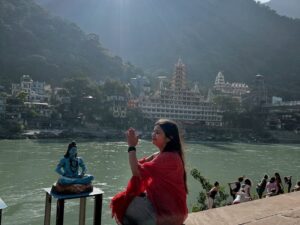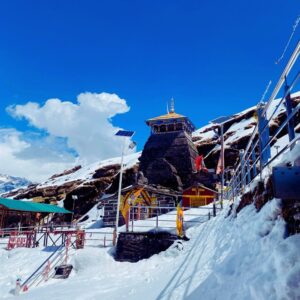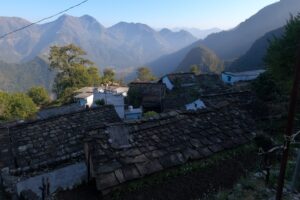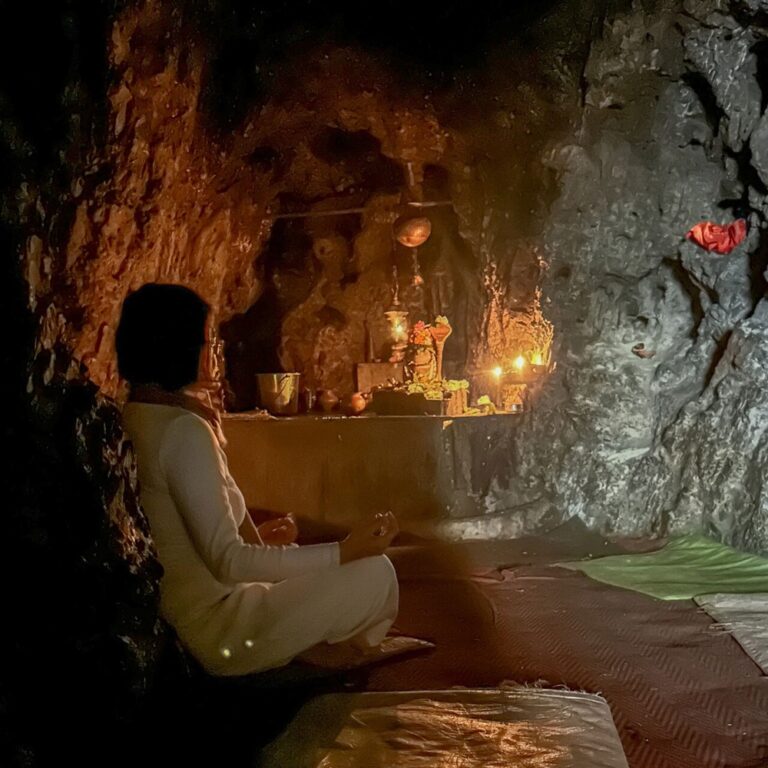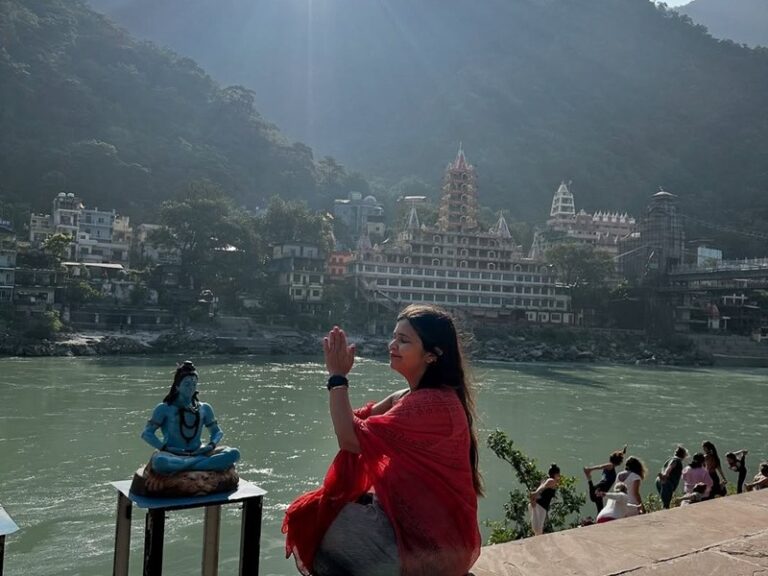Discover the Top 5 Most Attractive places in Delhi, India
Explore the most attractive places in Delhi, from the historic Red Fort to the vibrant Dilli Haat, offering something for everyone. Uncover the city’s rich culture, history, and lively atmosphere, perfect for visitors of all ages and interests.
Delhi, the capital of Incredible India, is truly as remarkable as the country itself. This vibrant city is filled with some of the most captivating tourist places, offering endless opportunities for exploration. From the historic Red Fort to the bustling Dilli Haat and beyond, it is packed with attractive places for people of all ages and interests.
Whether you’re searching for romantic places like the Garden of Five Senses or family-friendly destinations like the Nehru Planetarium, Delhi has something special for everyone. And with an array of excellent hotels in Delhi ensuring a comfortable stay, you’re set for a memorable trip in the beloved Dilwali Dilli.
Overview: Attractive places in Delhi
It’s no surprise that Delhi tourism attracts travelers from across India and the world. So, let’s dive into some of the must-visit places in Delhi—we’re sure you’ll fall in love with this incredible city!
Delhi Monuments & Temples: Unveiling Exceptional Structural Marvels
Delhi is home to some of India’s most iconic landmarks, each rich with history, architectural grandeur, and cultural significance. Here’s a closer look at some of Delhi’s must-visit monuments and temples:
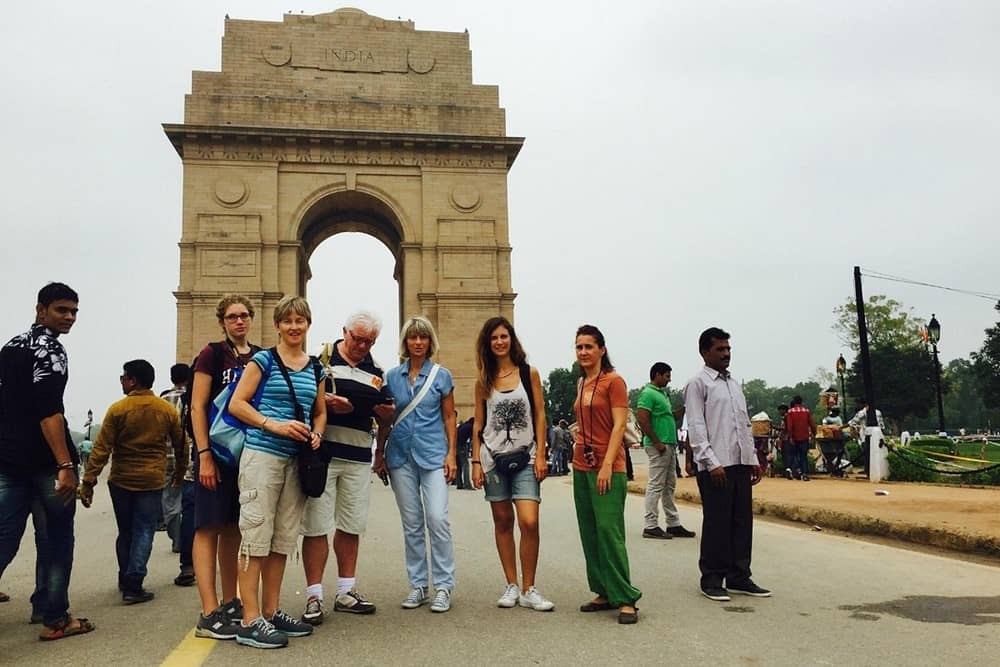
1. India Gate
India Gate: A Tribute to Valor
Overview
At the heart of New Delhi stands the magnificent India Gate, a 42-meter tall sandstone archway resembling the Arc de Triomphe. It serves as a memorial to the 70,000 Indian soldiers who sacrificed their lives while fighting for the British Army during World War I. In addition to these soldiers, the arch commemorates over 13,516 British and Indian soldiers who perished in the Afghan War of 1919, their names inscribed on its walls.
Historical Significance
- Foundation and Design: The foundation stone of India Gate was laid by His Royal Highness, the Duke of Connaught, on February 10, 1921. Designed by the renowned architect Sir Edwin Lutyens, the monument was officially inaugurated by Viceroy Lord Irwin on February 12, 1931.
- Amar Jawan Jyoti: After India gained independence, a significant addition to the memorial was made with the establishment of the Amar Jawan Jyoti, an eternal flame that burns day and night under the arch. This flame honors the soldiers who lost their lives during the Indo-Pakistan War of December 1971 and was inaugurated by Prime Minister Indira Gandhi on January 26, 1972.
Architectural Features
The India Gate rises from a base of red Bharatpur stone, ascending in stages to a grand molding. Its cornice is adorned with the Imperial suns, while both sides of the arch prominently display the word “INDIA,” flanked by the dates MCMXIV (1914) on the left and MCMXIX (1919) on the right. Originally, the shallow bowl atop the arch was intended to hold burning oil on anniversaries, though this practice is now rarely observed.
Aesthetic Appeal
At night, India Gate is dramatically illuminated, creating a stunning visual against the backdrop of colored fountain displays nearby. It marks one end of Rajpath, a grand avenue that enhances its prominence in the landscape of New Delhi. Surrounding the arch are expansive lawns, making it a popular picnic spot for locals and tourists alike, especially during the vibrant summer evenings when families gather on the green spaces.
10 Lesser-Known Facts About India Gate
- Construction Timeline: The construction of India Gate, originally named the All-India War Memorial, began in 1921 and concluded in 1931 when New Delhi was designated as India’s capital.
- Troop Commemoration: The arch commemorates Indian troops who fought in both World Wars and the Afghan Wars, with etched names on its walls.
- Architectural Inspiration: The design of India Gate draws inspiration from the Mahabalipuram pavilion of the 18th century and was originally adorned with a statue of King George V until 1947.
- Black Marble Cenotaph: The Amar Jawan Jyoti features a black marble cenotaph with a soldier’s helmet and a rifle, symbolizing the soldiers who fought for the nation.
- Symbolic Engravings: The imperial sun symbols engraved on the cornices of India Gate reflect its historical ties to British colonialism.
- Cenotaph’s Eternal Flame: The Amar Jawan Jyoti under India Gate glows continuously, honoring the sacrifices of soldiers from the Indo-Pakistan War.
- National Pride: The Indian Flag, which was previously hoisted at Rashtrapati Bhavan, is displayed at India Gate during the Republic Day parade, adding to its significance.
- Public Gathering Place: The area around India Gate is a favorite spot for picnics and recreational activities, offering boating facilities and lush green surroundings.
- Commissioning Authority: The Imperial War Graves Commission oversaw the establishment of several British memorials, including India Gate.
- Cultural Importance: Today, India Gate stands not only as a memorial but also as a cultural hub, symbolizing the sacrifices made by Indian soldiers throughout history.
History of India Gate
India Gate, initially known as the All-India War Memorial, was established by the Imperial War Graves Commission (IWGC) following the end of World War I. The IWGC was created in December 1918 under British authority to construct war graves and memorials for troops killed during the conflict.
The foundation stone for India Gate was laid by the Duke of Connaught on February 10, 1921, at 16:30.
This significant ceremony was attended by officers and men of the British Indian Army, the Imperial Service Troops, the Commander in Chief, and Viceroy Lord Chelmsford. During the ceremony, the Viceroy remarked, “The stirring tales of individual heroism will live forever in the annals of this country.”
He emphasized that the memorial would serve as a tribute to the memory of both “known and unknown” heroes, inspiring future generations to face adversity with similar courage and valor.
Design and Structure of India Gate
The architectural design of India Gate was the work of Sir Edwin Lutyens, who was not only the chief architect of New Delhi but also a member of the Imperial War Graves Commission.
Lutyens was renowned for his expertise in designing war monuments, having constructed 66 such memorials across Europe, including the famous Cenotaph in London, which was commissioned in 1919.
India Gate stands at the eastern end of the Rajpath, symbolizing a poignant memorial dedicated to the valor of Indian soldiers. The structure rises gracefully, incorporating classical elements that reflect Lutyens’ design philosophy.
Amar Jawan Jyoti
- Beneath the arch of India Gate lies the Amar Jawan Jyoti, or the Flame of the Immortal Soldier. This tribute consists of a reversed L1A1 Self-Loading rifle, topped with a combat helmet, placed on a black marble podium.
- Surrounding the cenotaph are four urns that contain continuously burning flames fueled by CNG. The words “Amar Jawan” are inscribed in gold on each face of the cenotaph, emphasizing the honor bestowed upon the soldiers.
- The Amar Jawan Jyoti was inaugurated in the aftermath of Bangladesh’s liberation in December 1971 to commemorate the Indian soldiers who lost their lives during the conflict.
- This eternal flame serves as a constant reminder of the sacrifices made by the armed forces and the valor of those who fought for the nation.
2. Rashtrapati Bhawan: A Symbol of Indian Democracy
Introduction
Rashtrapati Bhavan, the official residence of the President of India, stands as a monument to the democratic ideals and pluralistic traditions of the world’s largest democracy. Designed by the distinguished architects Sir Edwin Lutyens and Herbert Baker, this magnificent palace is set within a sprawling 330-acre estate and was completed in 1929 after 17 years of construction.
Architectural Marvel
The construction of Rashtrapati Bhavan involved nearly 700 million bricks and 3 million cubic feet of stone, creating an architectural wonder that boasts an extensive network of corridors measuring 2.5 kilometers in total.
The main building alone covers an impressive 5 acres and features 340 rooms spread over four floors, making it one of the most significant and spacious presidential residences in the world.
The Gardens
One of the most celebrated aspects of Rashtrapati Bhavan is its stunning Mughal Gardens, which span 15 acres. These gardens are home to 159 varieties of roses, 60 varieties of bougainvillea, and a diverse range of other flowers, exemplifying the beauty of Mughal landscape design. The gardens are not only a visual treat but also reflect the rich horticultural heritage of India.
Rashtrapati Bhavan Museum Complex (RBMC)
In addition to its grandeur, Rashtrapati Bhavan houses the Rashtrapati Bhavan Museum Complex (RBMC), inaugurated by President Pranab Mukherjee on July 25, 2016.
This state-of-the-art museum includes the Clock Tower, Stables, and Garages, showcasing the history of the presidency, regal ceremonies, and the rich flora and fauna of the estate. Visitors can explore exhibitions that highlight both the past and present presidencies, offering insights into India’s political heritage.
Visiting Rashtrapati Bhavan
For those eager to experience this iconic landmark, prior online booking is essential. Delhi Tourism has facilitated access by providing Ho-Ho bus services to Rashtrapati Bhavan, making it easier for tourists to visit. The official website offers more details about booking and visiting: Rashtrapati Bhavan Tour Information.
Suggested Read: Discover Top 11 Attractive Underrated Places in Delhi, India

3. Agrasen Ki Baoli
Famous for its unique design and appearance in Bollywood films, Agrasen Ki Baoli is a historical stepwell known for both its architecture and haunted tales. It’s a great spot for friends to explore Delhi’s more mysterious side, and it captures the essence of ancient water conservation techniques.
- Location: Hailey Road, Near KG Marg, CP, New Delhi
- Timings: 7:30 am to 6:00 pm
- Entry Fee: Free
- TripAdvisor Rating: 4.0
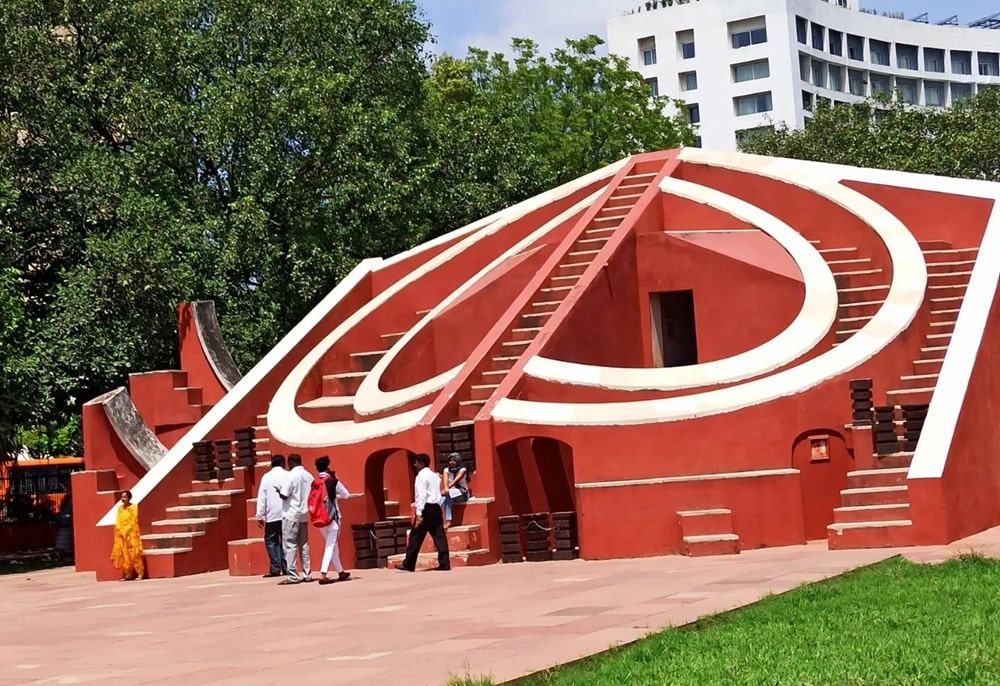
4. Jantar Mantar
Exploring Jantar Mantar: A Window into India’s Astronomical Heritage
Delhi, the capital of India, is a city steeped in culture and history, showcasing numerous architectural marvels that reflect its glorious past.
Among these, Jantar Mantar stands out as a unique site that offers insight into India’s scientific advancements during the 18th century.
Built by Maharaja Sawai Jai Singh II, this astronomical observatory is a testament to ancient Indian astronomy and remains a significant tourist attraction. This blog provides a comprehensive overview of Jantar Mantar, including its history, architectural wonders, practical information, and tips for visitors.
Historical Background
Delving into the historical significance of Delhi’s monuments reveals fascinating stories. Jantar Mantar is one of five astronomical observatories commissioned by Maharaja Sawai Jai Singh II between 1724 and 1730.
A brilliant astronomer and mathematician, Jai Singh constructed observatories in Delhi, Jaipur, Ujjain, Varanasi, and Mathura to enhance the accuracy of astronomical measurements.
The Jantar Mantar in Delhi was the first of these observatories, designed to facilitate the study of celestial bodies, track planetary movements, and predict eclipses.
The instruments at Jantar Mantar exemplify a remarkable blend of architectural brilliance and scientific utility, showcasing the advanced understanding of astronomy during the Mughal period.
Architectural Significance of Jantar Mantar
The Jantar Mantar in Delhi features 13 architectural instruments, each serving a specific astronomical purpose. Key structures include:
- Samrat Yantra: Known as the “Supreme Instrument,” this giant sundial is the most impressive structure, standing at 27 meters tall. Its precise triangular design allows it to measure the exact time of day as its shadow moves visibly every minute.
- Jayaprakash Yantra: Comprising two concave hemispheres, this instrument enables observers to align with the positions of stars using various markings. It was essential for determining celestial coordinates.
- Misra Yantra: This unique instrument helps to identify the longest and shortest days of the year and pinpoints the exact moment of noon across different locations.
- Rama Yantra: Featuring two circular buildings with open interiors, the Rama Yantra is used to measure the altitude of celestial objects, particularly the sun and planets.
Constructed from stone and brick, the instruments remain impressively accurate, reflecting the sophisticated understanding of the cosmos in 18th-century India.
The Purpose and Relevance of Jantar Mantar
While modern technology has largely replaced the need for these ancient instruments, Jantar Mantar remains an important historical site.
It offers valuable insights into the methods used by scholars of the past to study celestial phenomena and predict cosmic events. For history enthusiasts, science lovers, and tourists, visiting Jantar Mantar is an educational experience that connects the past with the present.
Additionally, Jantar Mantar continues to be a hub for astronomical studies and events. During significant celestial occurrences, such as solar eclipses, the observatory attracts both experts and curious visitors eager to observe these phenomena using ancient instruments.
Visitor Experience at Jantar Mantar
Visiting Jantar Mantar is both an educational and visually captivating experience. Centrally located near Connaught Place, the observatory is easily accessible. Once inside, visitors can explore the various instruments, learn about their functions, and appreciate the architectural precision of their construction.
Guided tours and audio guides are available, providing in-depth explanations of each instrument’s purpose. Whether you’re a keen astronomy enthusiast or simply a curious traveler, the striking structures, open spaces, and informative plaques make for an engaging visit.
The observatory is open-air, making it advisable to visit during the cooler parts of the day, particularly in Delhi’s warmer months. Shaded areas and benches offer comfort for those wishing to relax and soak in the historical ambiance.
Entry Fees and Timings
- Entry Fees:
- Indian Nationals: ₹15 per person
- Foreign Tourists: ₹200 per person
- SAARC & BIMSTEC Visitors: ₹15 per person
- Video Filming Fee: ₹25 per person
- Visiting Hours:
- Opening Time: 6:00 AM
- Closing Time: 6:00 PM
The observatory is open daily, and visiting during daylight hours is recommended to fully appreciate the functioning of the instruments. Early mornings or late afternoons, especially during winter (October to March), are ideal for a pleasant visit.
How to Reach Jantar Mantar
Jantar Mantar is centrally located and well-connected:
-
- By Metro: The nearest metro station is Janpath (Violet Line), a short walk away. Rajiv Chowk metro station (Yellow and Blue Lines) is also nearby.
- By Bus or Auto-Rickshaw: Numerous DTC buses, auto-rickshaws, and taxis service Connaught Place or directly to Jantar Mantar.
- By Car: Limited parking facilities are available near the observatory, particularly during peak hours.
Nearby Attractions
Located near Connaught Place, Jantar Mantar is surrounded by several attractions worth exploring:
-
- India Gate: A national symbol, best appreciated in the evening when illuminated, just a short drive from Jantar Mantar.
- Agrasen ki Baoli: A historical stepwell located nearby, offering a serene environment amidst the bustling city.
- Connaught Place: Known for its colonial architecture, shopping, and dining options, ideal for a leisurely stroll after visiting Jantar Mantar.
Tips for Visitors
-
- Wear Comfortable Shoes: Expect a fair amount of walking while exploring the observatory.
- Stay Hydrated: Carry water, especially in the summer heat.
- Respect the Heritage Site: Avoid touching or climbing on the instruments.
- Opt for a Guide: A guide or audio tour can enhance your understanding of the observatory’s significance.
- Plan a Combined Visit: Given its central location, consider combining your visit with nearby attractions like Connaught Place, India Gate, or the National Museum.
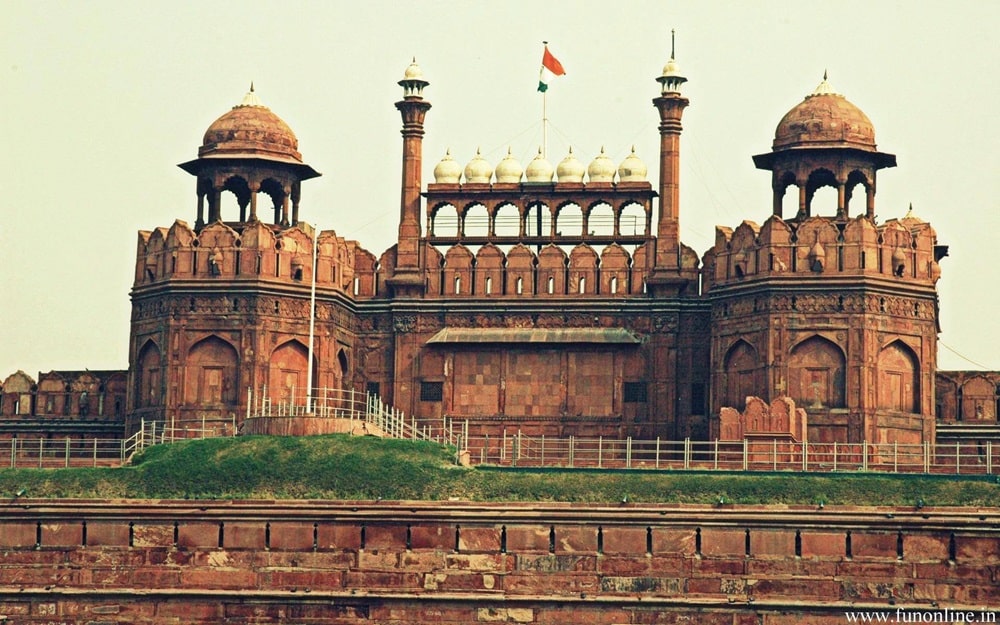
5. Red Fort Delhi
Red Fort: A Majestic Mughal Marvel in Old Delhi
The Red Fort, or Lal Qila, stands as a symbol of India’s rich heritage and history. Built by the Mughal emperor Shah Jahan in the mid-17th century, this iconic fortification is a UNESCO World Heritage site, recognized in 2007 for its outstanding universal value.
Architectural Grandeur
Enclosed by massive red sandstone walls that rise to 75 feet (23 meters), the fort encompasses a sprawling complex filled with architectural wonders. The design reflects the zenith of Mughal architecture, characterized by intricate artistry and a blend of Persian, Timurid, and Indian influences.
Among the standout features of the Red Fort are:
-
-
- Hall of Public Audience (Diwan-i-ʿAm): This grand hall is adorned with 60 red sandstone pillars supporting a flat roof, where the emperor would address the public.
- Hall of Private Audience (Diwan-i-Khas): Smaller than the Diwan-i-ʿAm, this hall features a beautiful pavilion of white marble, where the emperor would meet with dignitaries and guests.
- Gardens and Canals: The fort’s geometric gardens, along with indoor canals and baths, provide a glimpse into the luxurious lifestyle of the Mughal emperors.
- Ornate Mosque: Within the complex, visitors can find an intricately designed mosque, adding to the spiritual ambiance of the fort.
-
Historical Context
The Red Fort was built on the site of an earlier red fort established in the 11th century by Anangapala, a king of the Tomara dynasty. This earlier structure laid the foundation for what would become one of the most significant architectural feats in Indian history.
Today, the Red Fort remains a major tourist attraction, drawing visitors from around the world. Its impressive structure, historical significance, and cultural heritage make it a must-visit destination for anyone exploring Old Delhi. The fort not only symbolizes the Mughal era but also stands as a testament to India’s enduring legacy.
-
-
- Location: Netaji Subhash Marg, Chandni Chowk, New Delhi
- Timings: 9:30 am to 4:30 pm (Closed on Mondays)
- Entry Fee: ₹35 for Indians, ₹500 for foreigners
- TripAdvisor Rating: 4.5
-
These landmarks offer a fascinating journey into the architectural, cultural, and historical depth of India’s capital.
Attractive places in Delhi Attractive places in Delhi Attractive places in Delhi Attractive places in Delhi Attractive places in Delhi Attractive places in Delhi Attractive places in Delhi Attractive places in Delhi Attractive places in Delhi Attractive places in Delhi Attractive places in Delhi Attractive places in Delhi Attractive places in Delhi Attractive places in Delhi Attractive places in Delhi Attractive places in Delhi Attractive places in Delhi Attractive places in Delhi Attractive places in Delhi Attractive places in Delhi Attractive places in Delhi Attractive places in Delhi Attractive places in Delhi Attractive places in Delhi Attractive places in Delhi Attractive places in Delhi Attractive places in Delhi



